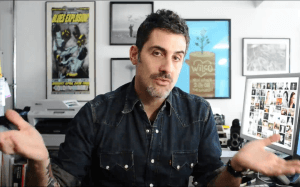Backup your Photos!
Backup. Everyone seems to stress about this. Lots of people say they’ll get around to it, but wait until it’s too late. Hard drives will fail. Yes, let me repeat, hard drives fail. It’s not a matter of if, more a matter of when. So it’s imperative to not only backup your photos, but to have a solid backup strategy in place. Something that is robust, redundant and automated so you can Set it and Forget it. Seriously, we are all so busy with our lives, the last thing we need is to manage our backup every day.
I would recommend that everyone have at least one full duplicate of your photo library. That means if your primary library gets corrupted or compromised, you have an exact duplicate to work from and restore another backup. I like to take things one step further and have triple redundancy. That means I have three exact duplicates of my photo library. They’re all on external Hard Drive RAID’s so that if at any time one of them goes, I can just start working off the other and still have a third backup as a safety. Ultimately, I will assign an off-site backup but that’s another conversation…
There are many different hardware and software solutions for creating a redundant backup. It’s always good to keep in mind how much data you have and how fast you think your data is growing so you can buy hard drives that you can grow into, rather than quickly fill up. Not only will that be a temporary fix, but hard drives lose performance as they get full and it’s never a good idea to operate close to full on your drives. Bearing that in mind, I’d recommend that you have at least 2 – 4 times the amount of space on your backup drive as your primary drive. Or if you’re mirroring like me, then have your drives be big enough that you can grow into them over a few years, not months.
This is all a bit difficult to gauge and an expensive proposition, however your photos are your life! If you value your work, then it’s worth investing in a robust backup solution for your precious files. If your drive gets corrupted and suffers disk damage, the cost of data recovery is in the thousands. This is an expense that could be avoided with a good backup solution.
Speaking of backup strategy, I always recall the saying, Save Often, Save A Lot. Don’t wait to backup your files at the end of the month. Maybe you’re not shooting every day or editing every day. So perhaps a daily backup is overkill, but consider your workflow and gauge your schedule on that. Have it be automated. I can’t tell you how many times I hear from people that lose files because they say it’s been ages since they ran a backup. Let the computer do the heavy lifting for you. Schedule the backups. Have it run during off-hours, meaning have the scripts run late at night or early in the morning when you’re NOT working on your computer. Shut all extraneous applications in preparation of your backup. Don’t go to bed with every app running and a million files open. Create a win-win for your computer to have as many resources available to create the backup.
This is the non-glamourus part of photography. But it’s essential. It’s like going to the dentist. Nobody likes it but we all need to maintain the health of our files. If you don’t already have a backup strategy, sit down, take the time to map one out. Figure out what drives you need and what software you’re going to run. Sketch it out, set it and forget it. And remember to Save Often and Save A Lot!
Please subscribe and leave your questions and comments below.




